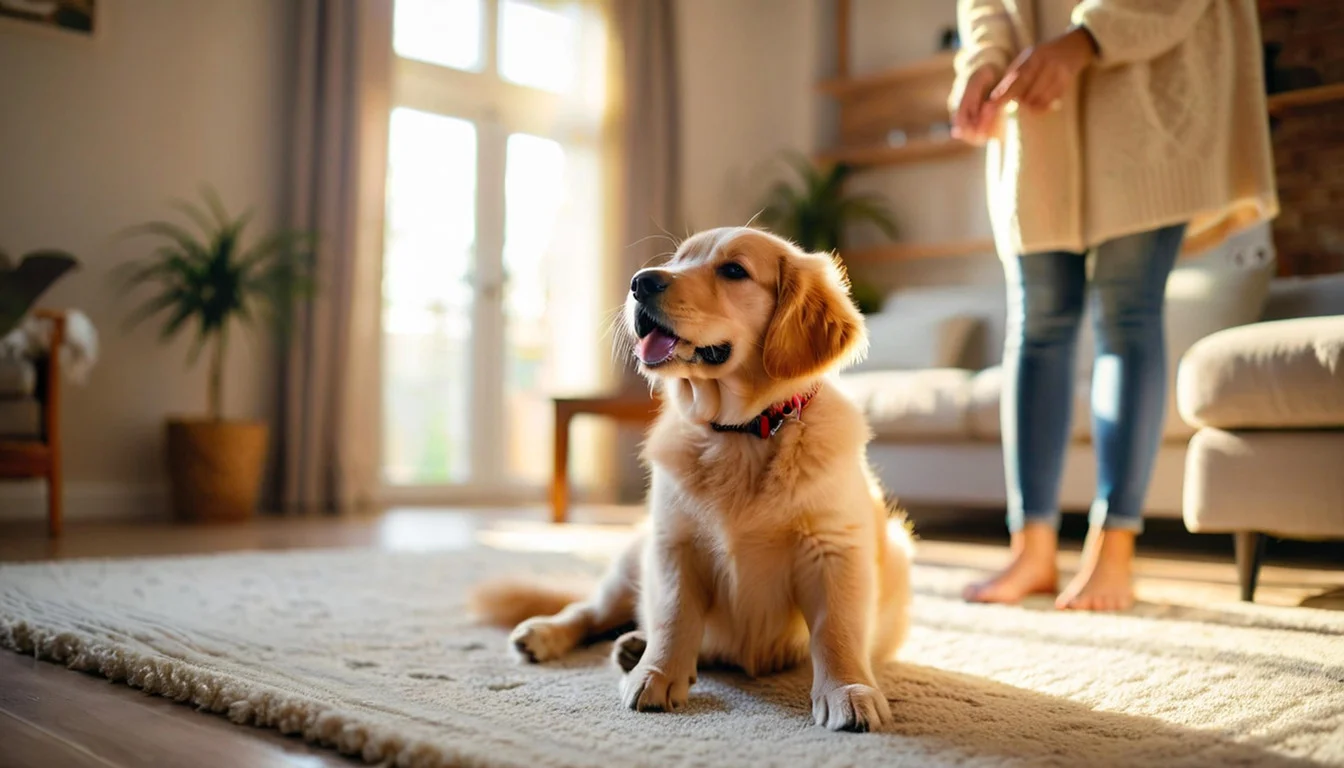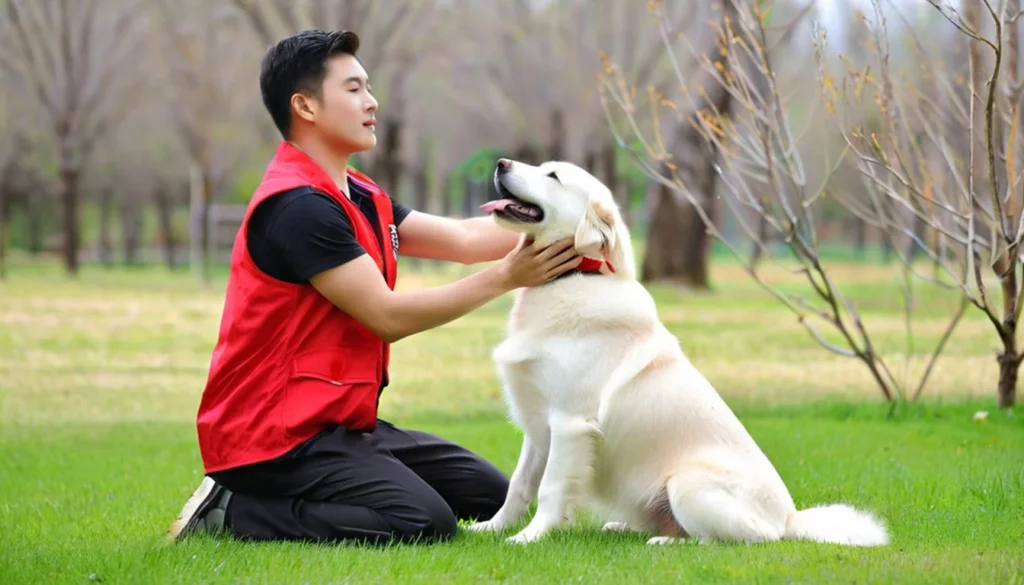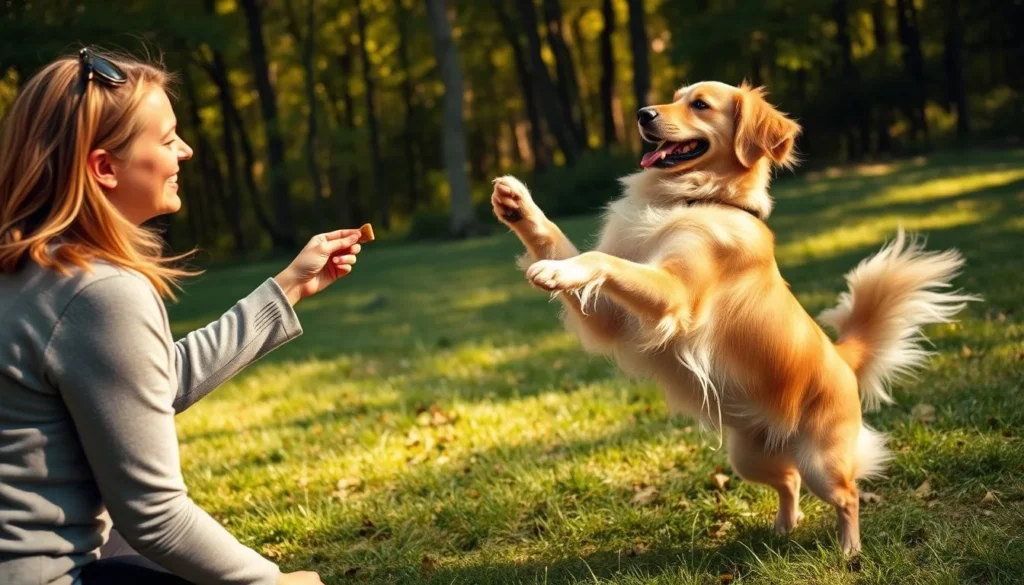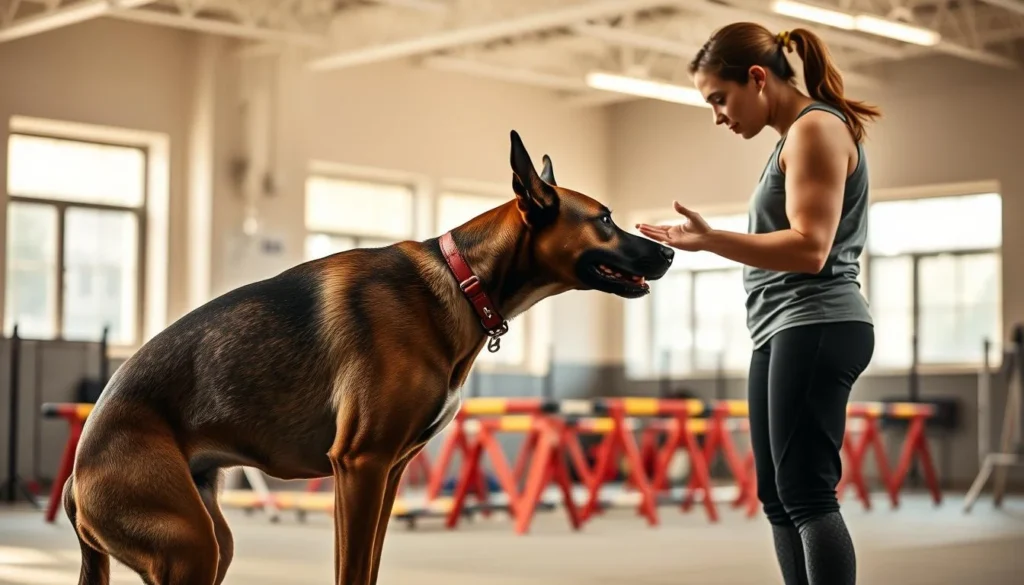As a dog owner, I often think about the amazing bond we form through training. It's incredibly rewarding to see a puppy understand and respond. But when can you start training a dog? It's important because early training makes them well-behaved.
Starting when they're young helps build trust and good habits. It shapes their behavior in a positive way. Let's dive into the tips and techniques for effective puppy training. This will lead to a lifetime of happiness and harmony.
Key Takeaways
- Early dog training is crucial for behavior development.
- Puppies can start learning as early as 8 weeks old.
- Establishing basic commands early benefits long-term obedience.
- Socialization during the initial months is essential.
- Positive reinforcement strengthens the training experience.
- Patience is key to successful puppy training.
Understanding Puppy Development
Learning about the stages of puppy growth is key for training a new puppy. Each stage has its own traits and behaviors that affect their learning and growth. Knowing this helps me train them at the right time.
Stages of Puppy Growth
Puppies go through several stages in their early months. The first stage starts at about 8 weeks, where they learn fast. They can pick up simple commands like "sit" and "come."
This shows they're ready to start learning language and actions. It's why early training is so important.
- Neonatal Stage (0-2 weeks) - Limited responsiveness and dependence on mother.
- Transitional Stage (2-4 weeks) - Eyes open and ears begin to respond; early social interactions start.
- Socialization Stage (4-12 weeks) - High receptiveness to learning; best time for positive experiences.
- Juvenile Stage (3-6 months) - Continued learning and exploration; learning capacity of young puppies remains strong.
- Adolescence (6-18 months) - Independence increases, training may require more reinforcement.
The Learning Capacity of Young Puppies
The learning ability of young puppies peaks between 6 to 16 weeks. They can take in a lot of new information during this time. Positive experiences and consistent training help them grow well.
It's also important to remember that puppies learn at their own pace. Being patient and flexible is crucial in their training.

When to Start Training a Puppy
Starting puppy training at the right age is key to their development. The best time for basic commands is around 8 weeks. At this age, puppies are eager to learn and can pick up essential skills.
This early stage is vital for teaching basic commands and starting puppy socialization.
Optimal Age for Basic Commands
Training should start as soon as your puppy arrives, ideally at 8 weeks. Puppies are like sponges, soaking up new information. My puppy was eager to learn simple commands like "sit" and "stay."
This foundational training helps establish discipline and encourages positive behaviors.
Socialization and its Importance
Puppy socialization is another key part of early training. Introducing your puppy to different experiences, people, and environments is crucial. I took my puppy to parks, vet visits, and met new people to boost his confidence.
Proper socialization not only prevents behavioral issues but also makes them friendly to other animals and people.
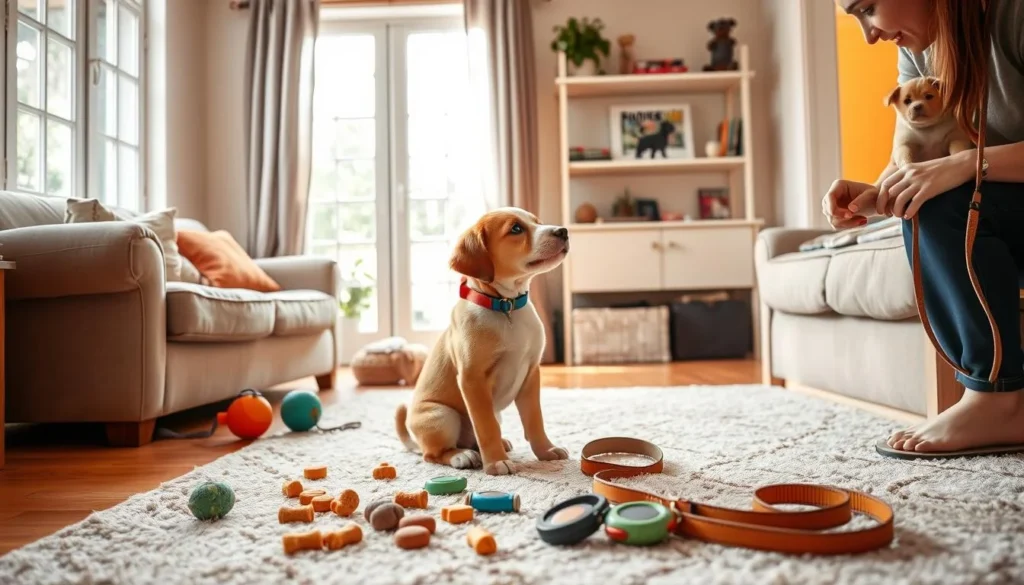
At What Age Can You Start Training a Dog
Many people wonder, "When can I start training my dog?" The answer is simple: you can start as soon as your puppy comes home, usually at 8 weeks. Early training lays a strong foundation and strengthens your bond with your puppy. It ensures your puppy grows into a well-behaved family member.
Training Timeline for Various Skills
When you bring your puppy home, start a training plan right away. In the first weeks, focus on:
- Basic potty training
- Getting them used to their crate
- Introducing simple commands like "sit" and "come"
As your puppy grows, usually in the first six months, build on this basic training. Teach essential commands and socialize them. This is crucial for a happy and confident dog.
Key Behaviors to Focus On Early
Focus on key behaviors early on to set a good example. Teach your puppy:
- Polite interactions with people and other dogs
- Understanding the "leave it" command to prevent unwanted chewing
- Being comfortable with handling and grooming
Starting with these behaviors helps build a strong communication base. It makes learning easier for both you and your puppy.
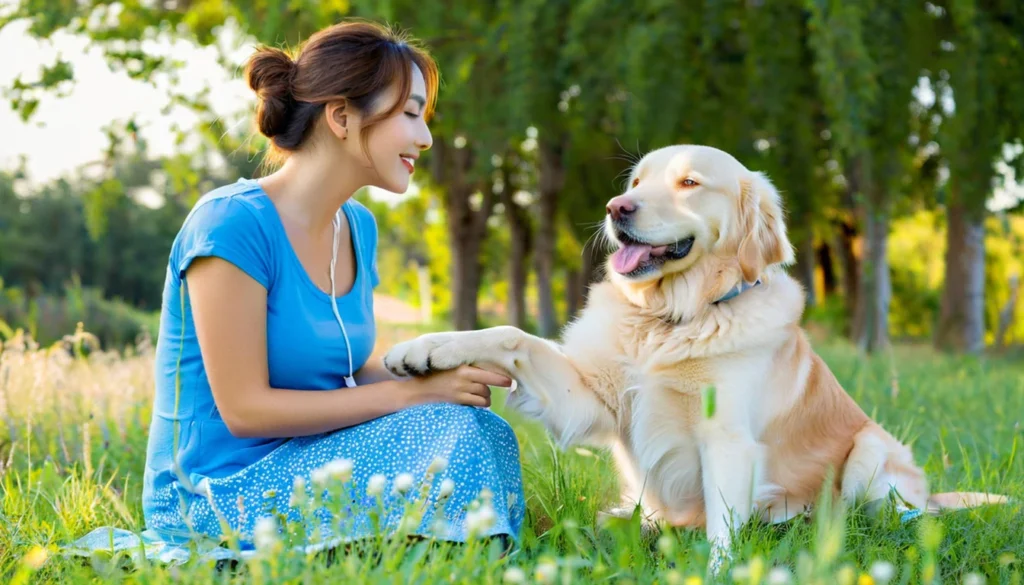
Essential Training Techniques
Training my puppy is all about using the right techniques. Positive reinforcement is key. It rewards my puppy for good behavior, making them want to do it again. A clear routine with vocal cues helps them understand what's expected.
Positive Reinforcement Methods
Using treats, praise, or playtime creates a positive atmosphere. It motivates my puppy to behave well. Timing is everything; rewards should come right after the good behavior. Mixing up rewards keeps training fun for my puppy.
Consistency and Patience in Training
Consistency is crucial in training. I stick to a routine where commands are clear. Sessions are short, lasting 5-15 minutes, to keep my puppy focused. Being patient is important; mistakes are part of learning. Every session helps my puppy grow and understand training.
Starting with Potty Training
Starting potty training puppies can seem tough, but it's key to their growth. I suggest beginning when they're 8 to 12 weeks old. This early start helps them learn good habits. A set schedule is vital, showing them when and where to go.
With regular practice and rewards, most puppies learn in a month. This makes the process smoother and faster.
Understanding Potty Training Timeline
The potty training timeline varies for each puppy. The main thing is to take them out often, especially after meals, play, and naps. Watching their behavior helps me know when they need to go.
Puppies might need to go every 1-2 hours, especially at first. Quick responses to their signals make training easier.
Key Steps to Effective Potty Training
Effective potty training steps make the journey easier and more successful. Here are some tips I found useful:
- Establish a routine for potty breaks.
- Take the puppy to the same spot outside each time.
- Reward them immediately after they go in the right area, reinforcing good behavior.
- Be patient and expect accidents, as they happen often.
- Provide praise and encouragement to build their confidence.
Potty training is a continuous effort that needs consistency and support. Staying positive helps them understand where they should go.
Crate Training Basics
Crate training puppies is a key part of our journey. A crate offers a safe space and helps with potty training. When introducing a crate, make it a positive experience for your puppy. Start slow, letting them get used to it.
Choosing the Right Crate for Your Puppy
Choosing the right crate is important. It should be big enough for your puppy to move around comfortably. Remember these tips:
- The crate should not be too big, or your puppy might use one corner as a bathroom.
- Choose durable, easy-to-clean materials.
- Consider collapsible crates for easy storage and transport.
How to Introduce the Crate
Introducing the crate right can ease your puppy's anxiety. Start by placing the crate in a quiet spot. Let your puppy explore at their own pace. Here's how to do it:
- Leave the crate door open and encourage your puppy to enter with treats or toys.
- Slowly close the door while your puppy is inside to help them adjust.
- Start with short stays and increase the time as your puppy gets more comfortable.
Commands to Teach First
Teaching dogs commands is key to good communication with my puppy. Commands like "sit," "stay," and "come" are the basics. They help my puppy learn and understand what I want.
Basic Obedience Commands for Puppies
"Sit" is a simple yet powerful command. It teaches my puppy to be calm. Then, "stay" helps them learn patience. And "come" keeps them safe by making sure they come back when called.
Using treats as rewards makes learning fun. It shows my puppy how important these commands are.
Importance of Sit, Stay, and Come
"Sit," "stay," and "come" are the foundation of puppy training. They help control behavior and keep my puppy safe. Teaching these commands shows the power of consistency and positive feedback.
By focusing on these basics, I build a strong bond with my puppy. It's all about discipline and trust.
| Command | Purpose | Training Tips |
|---|---|---|
| Sit | Calm behavior and focus | Use treat to guide into position |
| Stay | Teach patience and control | Start with short durations, increase gradually |
| Come | Safety and recall | Use a cheerful voice and rewards |
Safety Considerations in Training
When training dogs, it's key to use humane methods. Many trainers still use shock collars, which can cause fear and anxiety. These outdated methods are not the best solution.
When to Avoid Shock Collars
It's important to avoid shock collars for a positive training environment. While some trainers think they work, they often make problems worse. Instead, use positive reinforcement to build trust and make training fun.
Dogs learn better when they feel loved and respected. Avoid using fear to train them. It's better to reward good behavior than punish bad.
Consequences of Using Harsh Methods
Harsh training methods can have serious effects. They can make dogs fearful or aggressive. It's crucial to use gentle and effective training methods.
Positive reinforcement not only teaches good behavior but also strengthens your bond with your dog. Think about the long-term effects of your training methods. Choose gentle and constructive ways to train your dog.
Conclusion
Starting dog training early is key to a strong start. The sooner I begin, the better my puppy will learn good habits. This leads to a happier and more well-adjusted dog.
Every stage of a puppy's life offers chances to learn. It's important to make the most of these moments for effective training.
This article has shared many helpful tips for training. I've learned about socialization, essential commands, and potty training. These tips help me know when to start training my puppy.
Using positive reinforcement and being consistent is crucial. It helps build trust between me and my dog.
Every dog is different, but following these tips will help us have a great time together. With love, patience, and these training methods, my puppy and I will form a lifelong bond.

